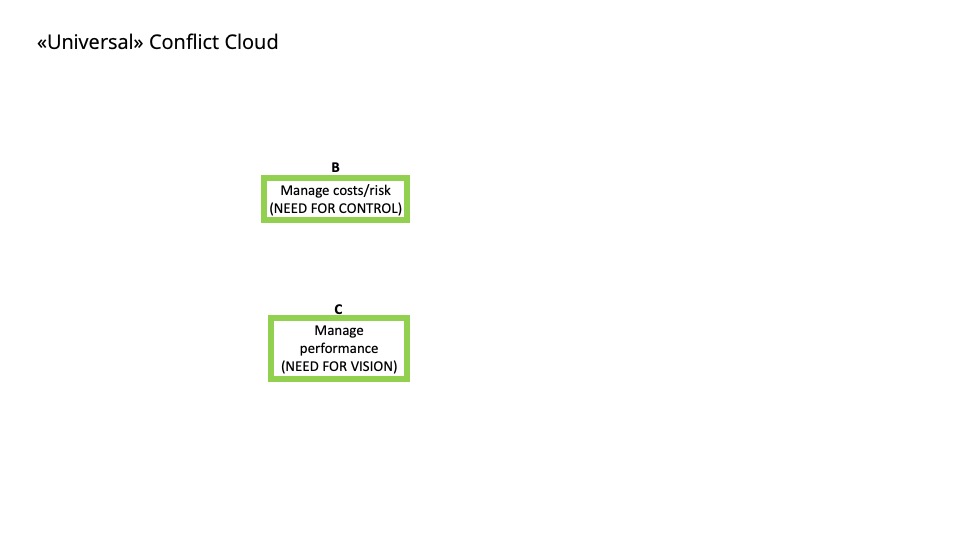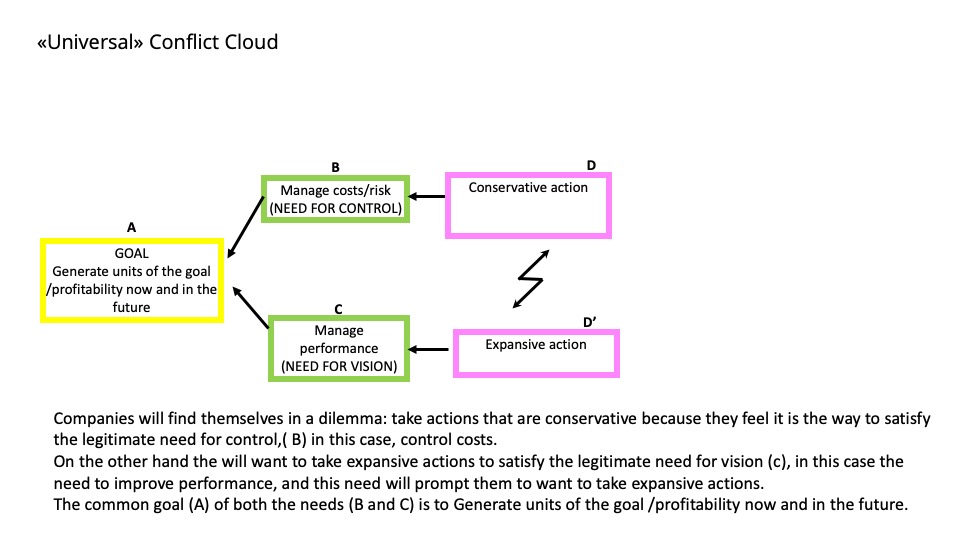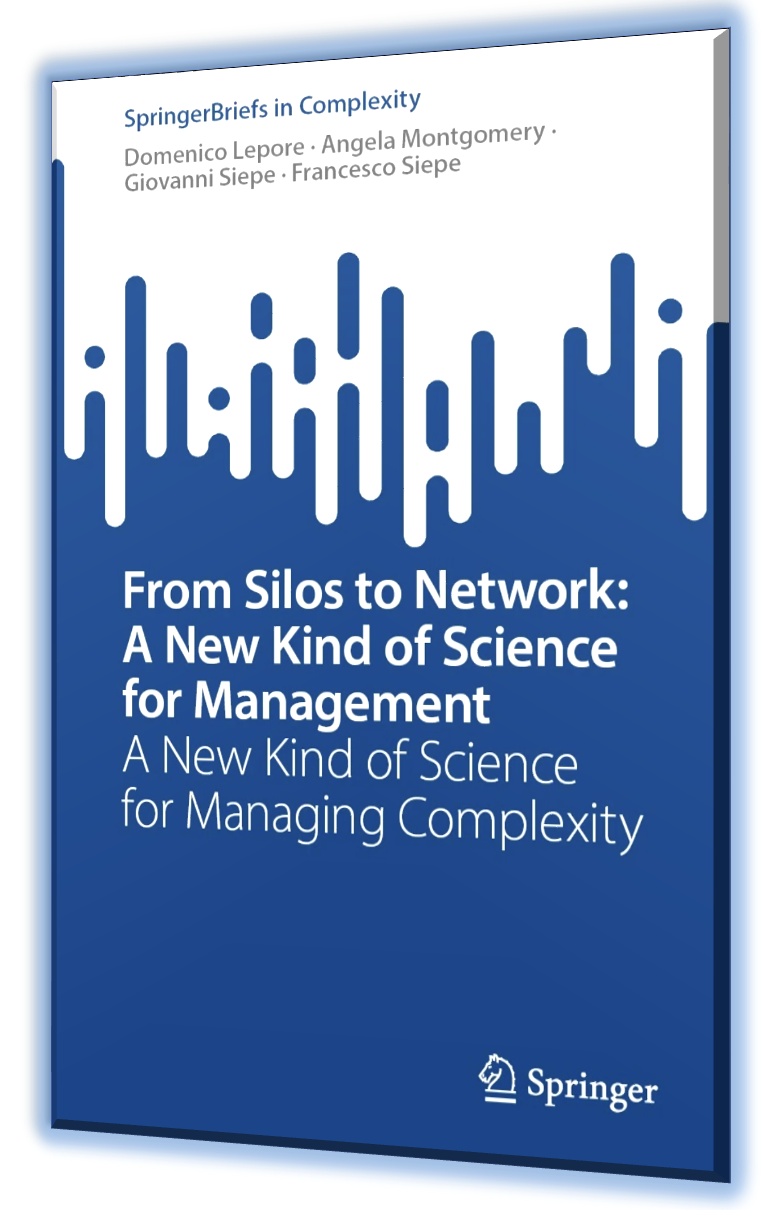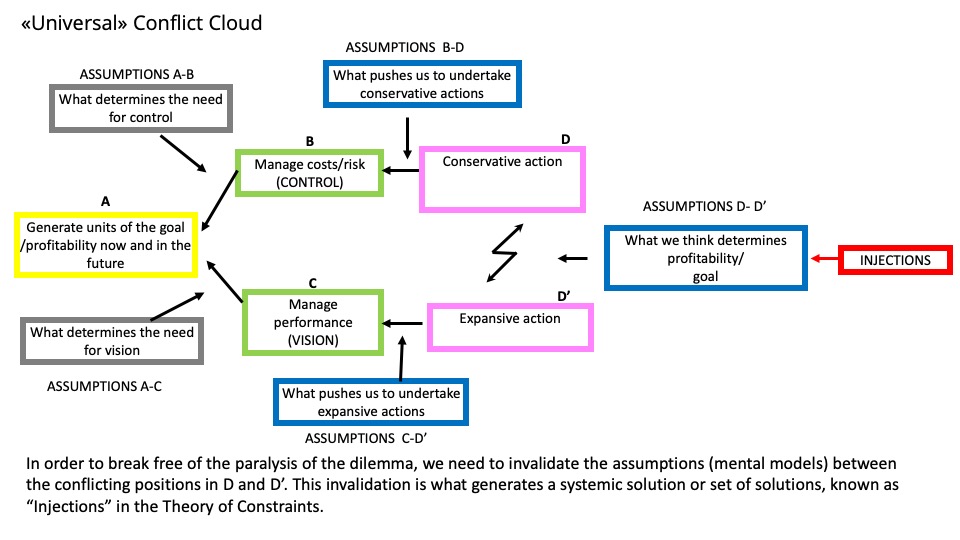What is the real difficulty that we face in wanting to create a true learning organization that overcomes the hierarchical/functional structure and replaces it with the far more suitable network of projects? The real issue here derives from the mental barriers that prevent individuals and organizations from working together as a system for a common goal. We cannot afford to be persuaded that only our individual efforts and personal drive will, eventually, be the cause of our success as countries. Those days are gone forever.
We live in a completely interconnected, interdependent, increasingly complex world where the levers for success have definitively shifted from competition to cooperation, from win-lose to win-win, from ‘me against you’ to you and me against the problem. We don’t just need new knowledge; we need a new form of organization and a new covenant with our mind. In order to live and prosper in this world of unprecedented interconnection we have to learn at a much faster pace, and we can only do so if we improve our ability to leverage our intellect.
The ability that humans have to adapt to physical changes is far greater than the ability needed to adapt to mental changes. Moving from a “Gaussian” view of the world with a symmetrical distribution around the average value to one characterized by poorly predictable spikes (the fractal geometry of nature and its underpinning power law) simply has not yet registered with economists, bankers, politicians and regulators. It is not a matter of education (although that has played some role), it is a matter of cognition processes.
COVID-19, by leading to a respiratory, pneumonia-like crisis triggered by the infection, moved the constraint of the medical supply chain to ventilation. We knew the virus would lead to breathing problems but we did not think systemically about the issue in order to prevent a tragic shortage of resources when needed. Why? What did we lack in order to think along those lines?
What that crisis highlighted was a dramatic inability to think and act in a systemic way, only marginally remediated by the heroic efforts of healthcare practitioners. The gigantic worldwide quantitative easing effort put in place by central banks, while certainly beneficial, must be coupled with a structural rethinking of what sustainable prosperity must mean going forward and how to design organizational systems coherently; only an outdated economic model would look at this stimulus as the catalyst for an imminent recession. The truth is that we need to move on from the value creation “for the shareholders” paradigm that has shaped business schools around the world. It is the whole concept of how we can live together sustainably that has to change. This transformation can only take hold if new thought processes and a new epistemological framework for sustainable wealth creation are adopted.
Especially in light of a crisis we need a much more powerful way to:
- Frame the situation of blockage/ crisis (existing reality)
- Identify the self-limiting mental models that have created and keep us in that blockage
- Develop a comprehensive (systemic) set of solutions
- Enact them expeditiously with the resources available (finite capacity)
- Design organizations coherently
The Theory of Constraints enhances our ability to think systemically and connect a series of dots that otherwise we would not even see. They support decision-making as we become capable of seeing a bigger picture and the systemic implications that our decisions can trigger.
Addressing fear and vision in a practical way
Let’s take a look through the lens of the Theory of Constraints at a dilemma that many companies will be facing regarding their sustainability as a result of the current crisis. We will first illustrate it as a “universal” dilemma and then look at a more specific verbalization of the situation of blockage that companies may be facing today.
In any situation of blockage, even more so in a time of acute crisis, an organization will experience two, legitimate and fundamental needs or “drivers”. One is connected with “control” and it may well express itself as fear or a drive to limit risk in some way, the other is connected with “vision” and a drive for growth and expansion. These needs are ever-present but rarely verbalized as such.
It is of vital importance to identify these needs and how they manifest themselves in a given situation because a) they allow us to derive a realistic goal for the organization to achieve and b) they determine positions that may lead to a situation of blockage (in some cases even paralysis if not addressed). In a moment of crisis, it is natural that fear is very present, but no organization can afford to focus on fear alone.
The Conflict Cloud from the Theory of Constraints provides us with a way to make these needs evident and find a path to ensure they are always satisfied in the efforts to achieve the goal. If we think of a “universally applicable” conflict for moving out of the crisis, we can verbalize these two needs, referred to as B and C, as: Manage Costs/risk and Manage performance. 
These needs will inherently push in two opposing directions. On the one hand, the need to manage costs will push towards ”conservative actions”, whereas the need to manage performance will push towards “expansive action”. Both needs have the common goal of “Generating units of the goal/profitability now and in the future”.

Once we have identified the situation of blockage, the conflict cloud gives us the opportunity to understand why this blockage exists in the first place. What is it that keeps us stuck? It is the set of assumptions, or mental models, that connect the elements of the conflict together like a connective tissue and keep it alive. We can think of these assumptions in terms of latent thoughts that have never been verbalized but that exist and influence our behavior as an organization. Only by verbalizing these assumptions and “surfacing” them can we challenge them. Challenging our assumptions is the royal road to moving beyond a situation of blockage, or crisis, and emerging with a breakthrough, systemic solution. In the Theory of Constraints this kind of solution is called an “Injection”.
In the next part of this series we will look at the “Out of the Crisis’ Conflict cloud.
Other articles in this ‘Out of the Crisis’ series:
Part 1: A Serious Knowledge Gap Affecting Leaders and Executives
Part 2: What’s Wrong with Organizational Structures?
Part 3: Viral Insights from Managing Variation and Constraints
Part 4: How to Manage Decentralized Work
Part 5: Learning to Think Systemically to Make Informed Decisions and Pre-empt a Crisis
Part 6: Identifying Assumptions to Unlock Innovation and Move Beyond the Crisis
Part 7 A New Economics for Sustainable Prosperity
Contact: intelligentmanagement@sechel.ws
SCHEDULE AN INTRODUCTORY CALL WITH US








Leave a Reply